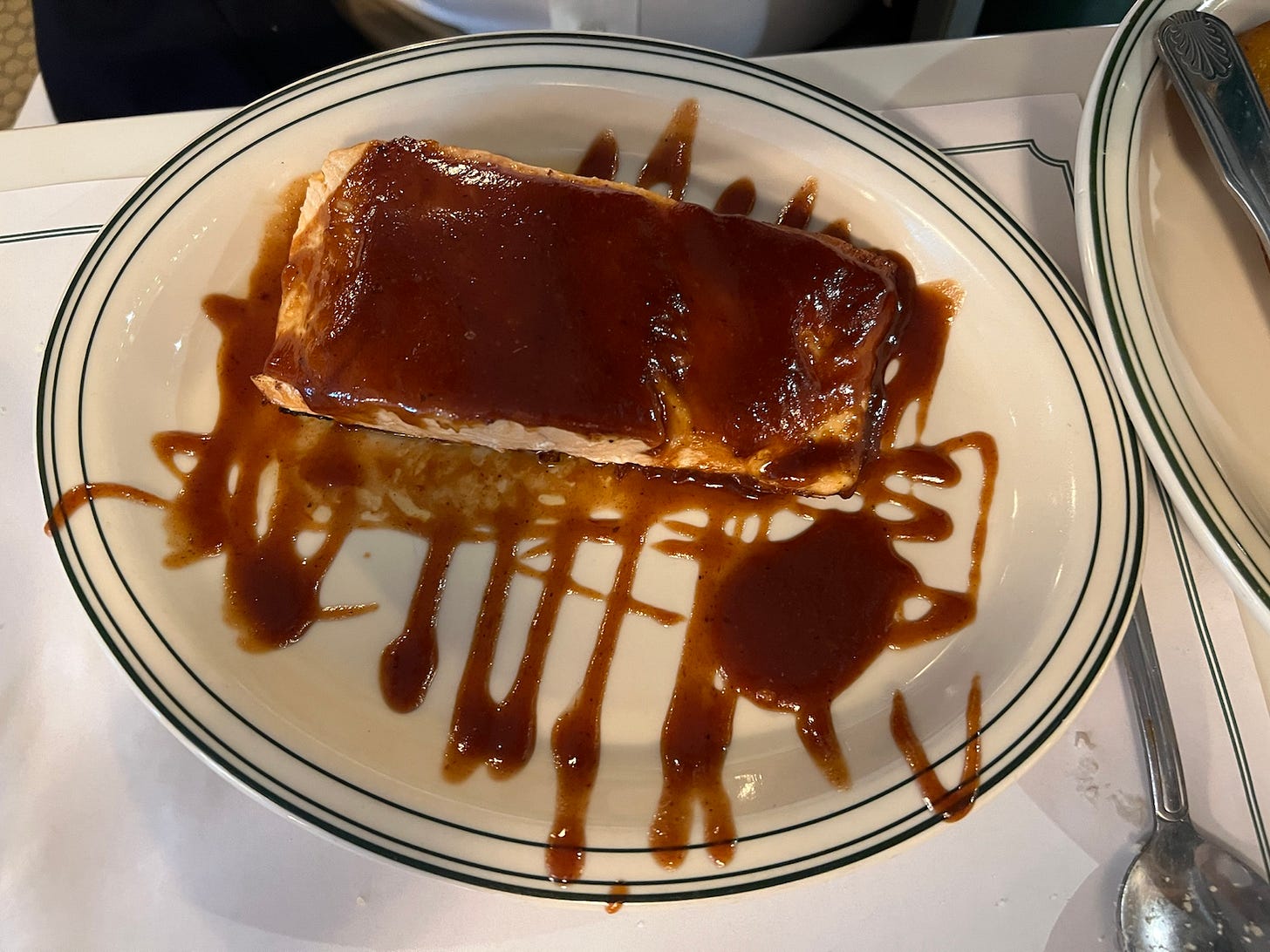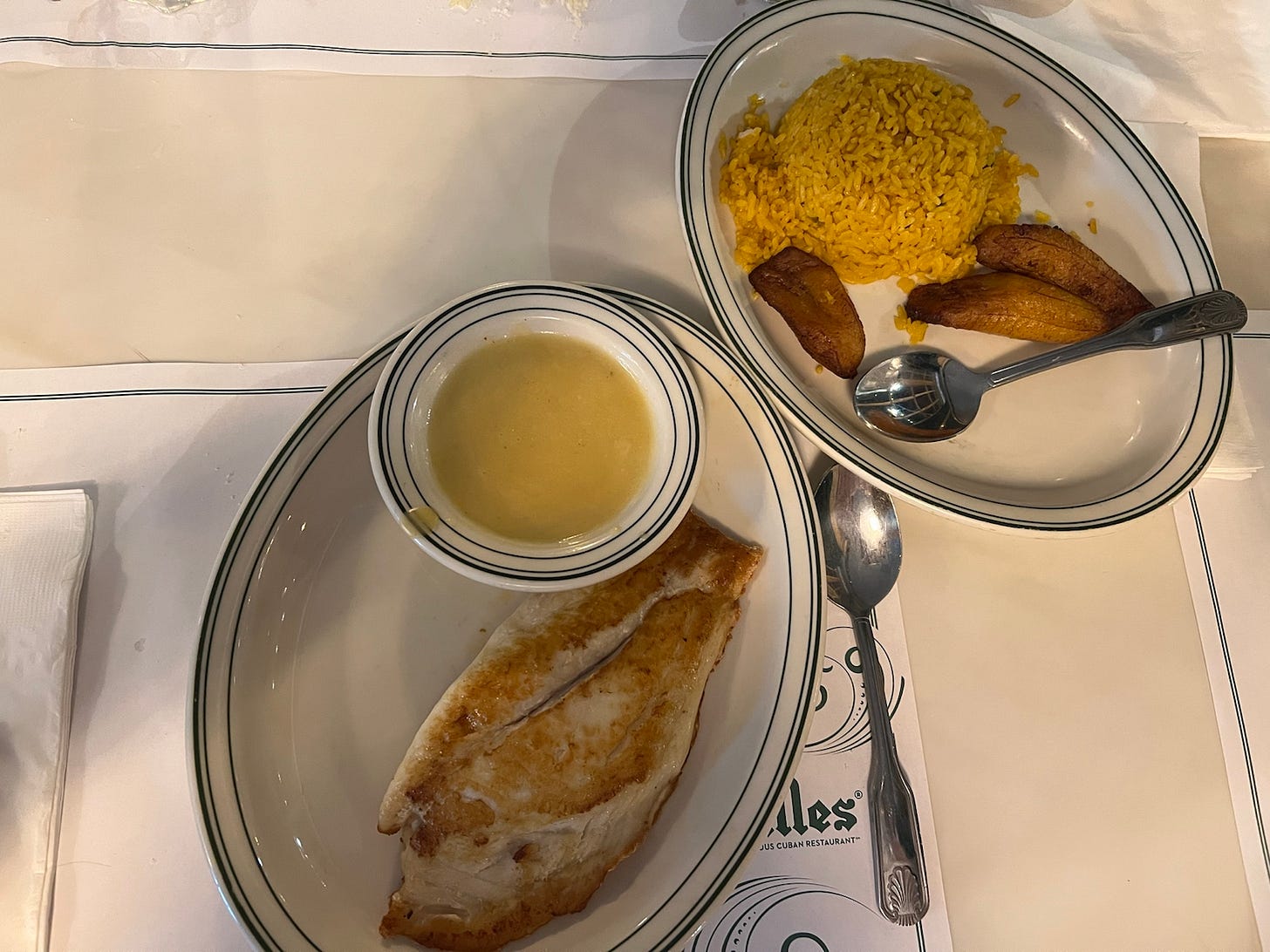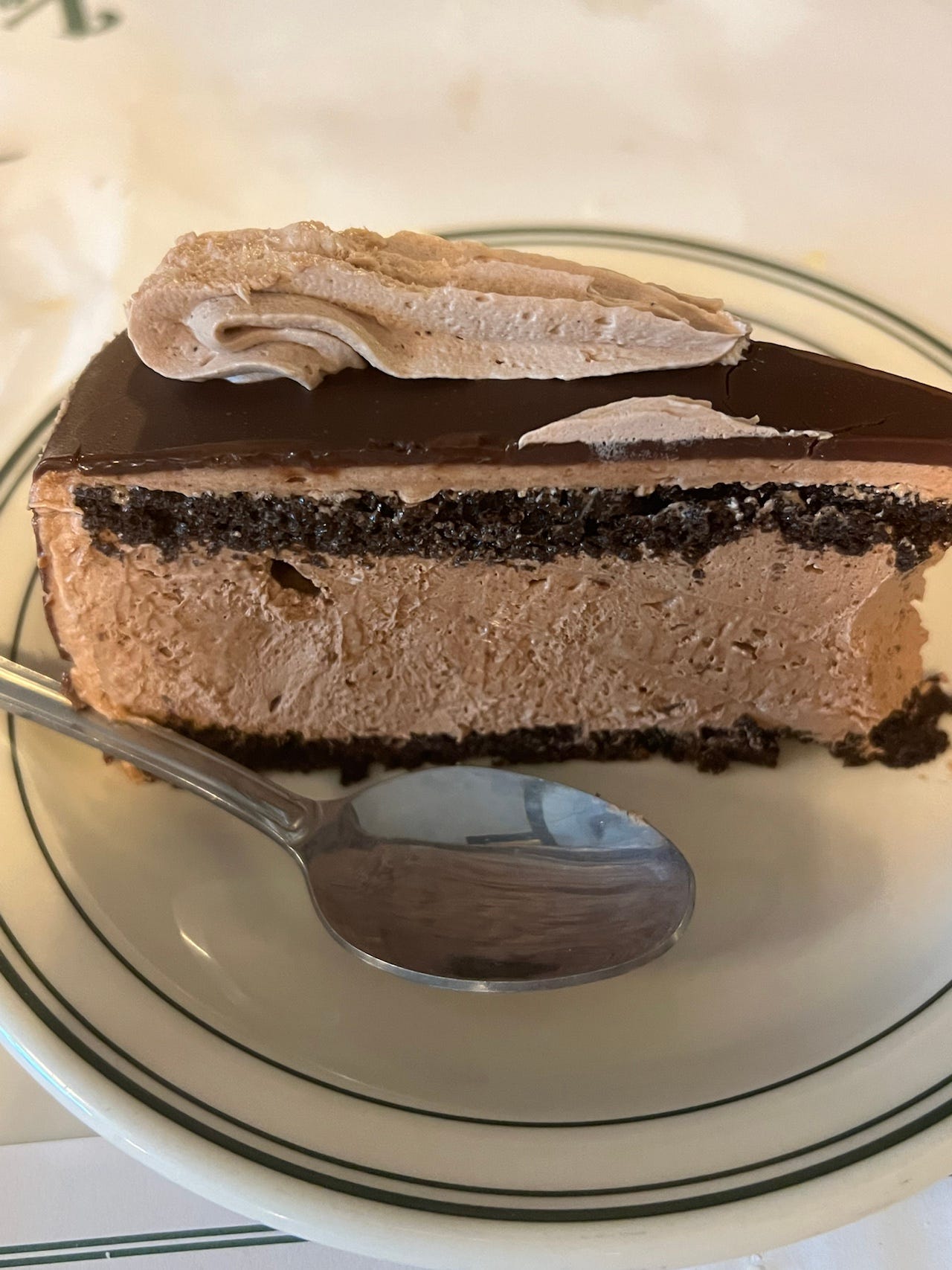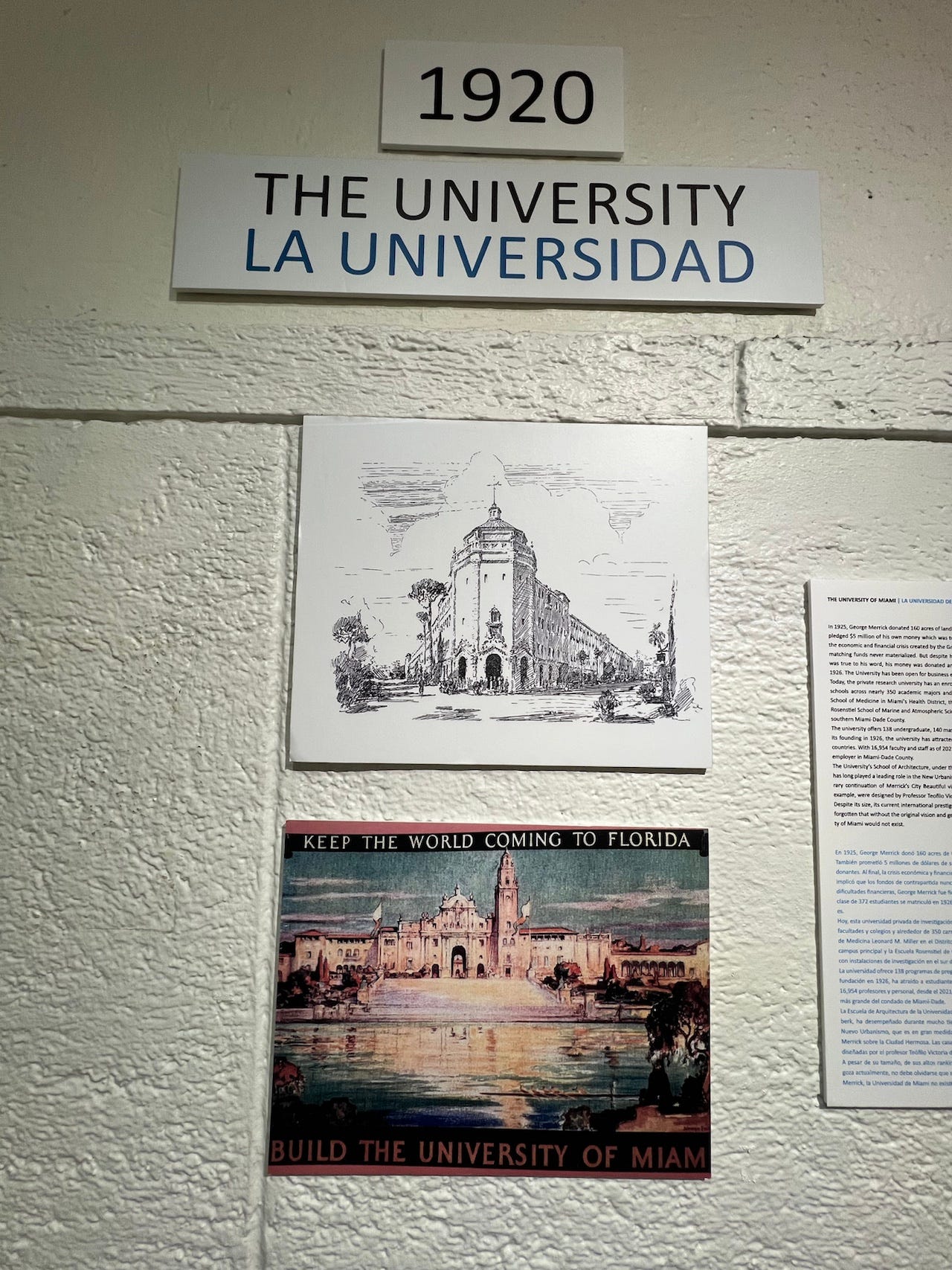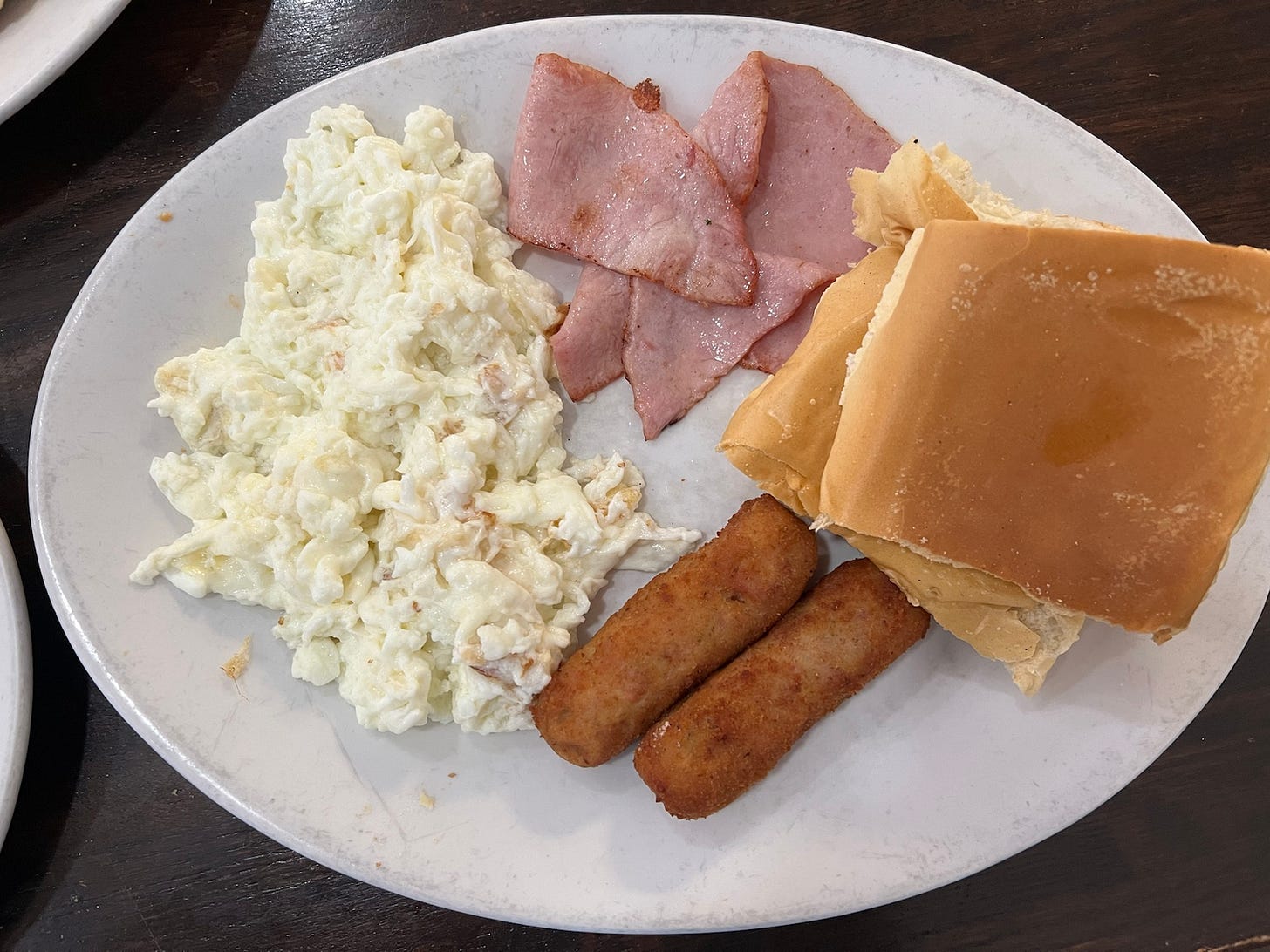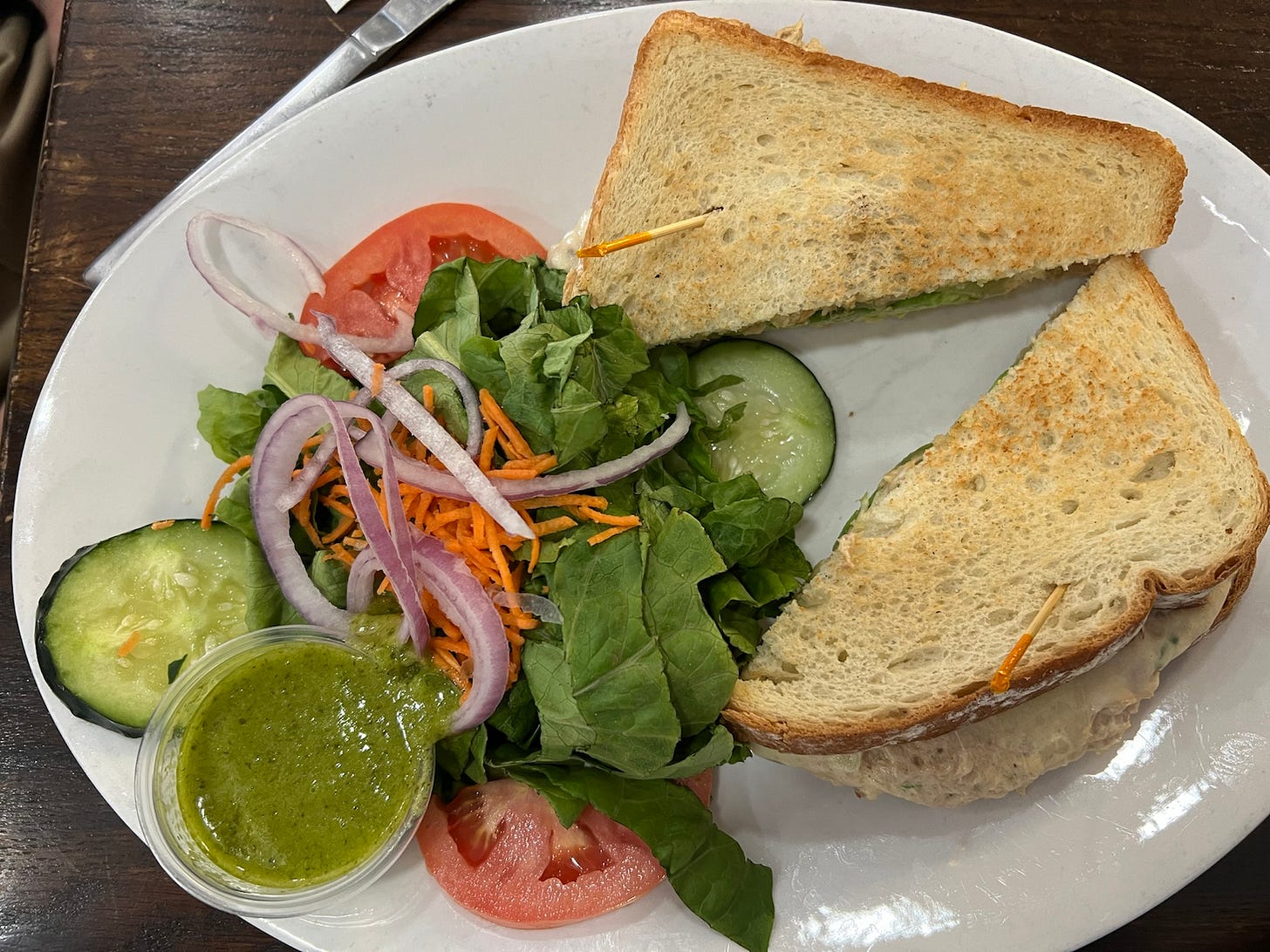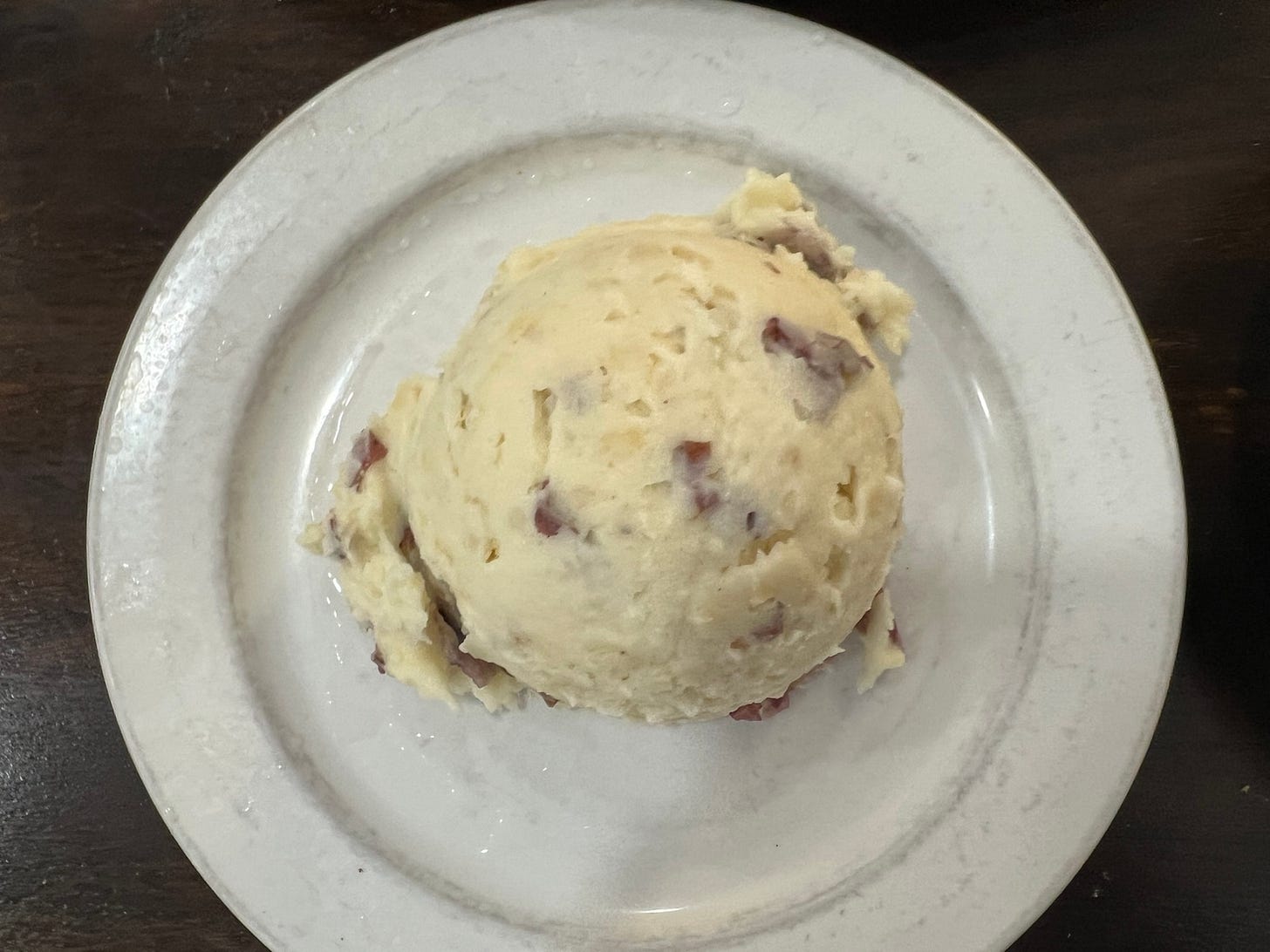A Taste of Cuba in Miami
From Café Versailles to Havana Harry’s
Miami’s identity is inexplicably linked to Cuban culture and food. Following decades of Cuban immigration, mainly after the 1950s, it became the de facto capital for Cuban cuisine. There are Cuban sandwiches (pork, ham, Swiss cheese, pickles, yellow mustard), ropa vieja (shredded beef in a tomato sauce with peppers and onions), tostones and maduros (twice-fried green plantains and caramelized ripe plantains), Cuban espresso, and Pastelitos (flaky pastries filled with meat, cream cheese, and guava).
We made it a point to visit two Cuban restaurants representing connection and tradition. I chose those two because they attract large families and friends, many Cubans, and itinerant travelers like us who are exploring their food scene.
Café Versailles
Café Versailles is a Cuban institution. A bright red, white, and green sign announces it’s “the world’s most famous Cuban restaurant.” It’s best known and appreciated for its Cuban coffee, pastries, and sandwiches, but we came for dinner to see what Cuban specialties we’d find. They don’t take reservations, so you show up and put your name on a list.
We waited twenty minutes to enter a packed dining room with families of all ages, kids, and babies. Servers masterfully managed massive serving plates, weaving through the bustling dining room with dishes laden with food. The back dining area was also packed, with couples holding hands, children standing on seats, and babies cradled in their mothers' arms.
We came for the atmosphere, the sense of community, and the rich history. It’s been there for almost 50 years, serving comfort food that is hard not to find tasty. Don’t expect haute cuisine but rather a meal that reminds you of what you might find being whipped up by a motherly Cuban in her kitchen.
I ordered halibut and white bean soup, while Phil chose salmon with barbecue sauce. He forgot to ask for sauce on the side; you can see how much they put on it. Given that Phil likes barbecue sauce, he wasn't unhappy about it, even if I wasn’t thrilled about that.
We split a Caesar salad and gave in to a decadent chocolate cake—of which I had just one bite. We took all of it back, and progressively, over days, Phil had the rest, mumbling it was my fault he ate it (What!?). Though we had fun and overate, we aimed for balance with some vegetables, leaving Café Versailles as a memorable night.
History and food tips from the Coral Gables Museum
Phil and I planned to visit the Coral Gables Museum, the perfect place to learn more about the city. Luckily, the ticket seller was delightful—informative about the museum and kind enough to chat about Cuban culture and cuisine.
“I love Havana Harry’s stuffed tostones,” she said.
“Write it down for me, if you don’t mind. I’m going to go,” I said.
I called out to Phil, who was already roaming in and out of a few rooms.
“Phil, we’re going to Havana Harry’s.”
“We’re not going to Havana until a few days from now,” he said.
“Don’t worry, we’re going to do a warm-up.”
“Huh?”
She told me more about Cuban food, that Havana Harry’s had a great selection, and that we’d have a good meal.
I thanked her and ran off to catch up with Phil. Together, we learned about George Merrick, the founder of Coral Gables. He was a hard-working, risk-taking developer and entrepreneur. His wife Eunice Parker’s grandparents were pioneers of Coconut Grove.
The Biltmore Hotel owes its existence to Merrick and hotel magnate John McEntee Bowman, while the Venetian Pool was the vision of Merrick and his uncle Denman Fink. Both are on the National Register of Historic Places.
According to Merrick’s Urban Achievements, highlighted at the museum, he is considered a key founder of the University of Miami because he donated 160 acres of land and $5 million.
I also found out that he had a plantation and sold vegetables in Coral Gables and up North once Henry Flagler’s East Coast railway connecting South Florida to New York was running.
Flagler’s trains and the Biltmore Hotel were damaged in the “Big Blow of 1926 hurricane.” That same hurricane hastened Merrick’s financial problems as the Florida real estate boom collapsed. After his finances fell in the late 1920s, Merrick and his wife sold personal belongings, including kitchen items and furniture, to fund ventures like fishing camps and vacation colonies. Late in life, he served as Postmaster of Miami. He died in 1942.
Merrick was key in shaping Coral Gables into an iconic and beautiful city. Still, the discussion of Merrick is incomplete without acknowledging the city’s history of racial segregation during his time. Whether this is what Merrick personally believed or it was the systemic racism of the era remains a subject of historical debate as people reflect on the past. This link provides further context: https://www.miamiherald.com/opinion/editorials/article251324953.html.
Off to Havana Harry’s
The following day, we headed to Havana Harry’s, a popular diner with takeout. We walked past full tables, eyeing the dishes on the way. The portion sizes at Havana Harry’s—oh my, they were something else.
She sat us at a large round table. For a split second, I thought the table was way too big for us, but if the dishes were anything like the sizes I’d just seen, boy, was it needed.
Of course, I ordered the tostones—crispy fried plantains topped with chicken and cheese, including guacamole and sour cream on the side. I picked through it, mainly eating the chicken and avocado and just a taste of the tostones. Crunchy, soft, tangy—it was very good. The ticket seller was right. This dish was tasty, but it had to be eaten carefully because we had so much more to try.
Since it was brunch, I ordered the Cuban breakfast for the main dish. Three eggs felt like a massive amount to me, but there they were with ham, croquettes, and toasted Cuban bread. The breakfast was comfort food, just like our US diners make, but with a Cuban twist. The ham and bread were seriously delicious, a treat as I don’t often eat ham.
Phil ordered a tuna melt with a salad and dressing on the side. The thick bread was toasted, and I tasted pickles in it. Honestly, it was the best tuna sandwich I’d ever eaten. I wondered how many calories were in this. We ended up sharing it.
On top of all this, Phil ordered garlic mashed potatoes, which he barely touched, and he loves potatoes.
While it’s part of the experience, I’d be remiss if I didn’t say the portion size exceeded anything I eat at home. The plates were larger than any I have at home. The portions were so generous that they made us pause and strategize about leftovers. We had a good amount of food left, so we asked for a box to take it with us.
Like Café Versailles, Havana Harry’s is a local hot spot. The parking lot was packed but that didn’t stop cars from lining up for pickup. As we waited for the Lyft driver, a minor fracas broke out between a driver whose car was blocked and another person waiting for someone in their party to return with a takeout order—the place, inside and out, bubbles with energy.
This could be where you can experience a bit of Cuba in Miami.





